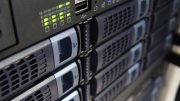The healthcare information technology domain has emerged as a discipline that is at the intersection of computer science, information science, and advanced practices concerning healthcare. Constant improvement in electronic health records, mHealth, Telehealth, picture archiving and communication systems, and radiology information systems has ensured that the usage of information technology systems in the global healthcare industry goes beyond storing, analyzing, and sharing patient health data. Apart from achieving universal health equity, healthcare IT systems are helping the government agencies and healthcare regulators across the globe to formulate all-inclusive policies that would prevent the spread of diseases, improve overall healthcare delivery, and ensure cost-effective quality medical care.
Over the last few years, emerging and developed nations across the globe appear proactive in rolling out ambitious programs that intend to leverage technological advances to strengthen healthcare infrastructure. Global Market Insights, Inc. forecasts that by 2025, the worldwide healthcare IT market will surpass USD 441.8 billion in valuation, amid increasing deployment of these tools to enhance the healthcare industry. Enumerated below is a brief overview of the major initiatives that are being undertaken by various countries to boost their respective healthcare infrastructure with the help of information technology solutions:

Strengthening India’s universal immunization program with the incorporation of healthcare IT systems
Regarded as one of the fastest growing economies in the world, India has come a long way in establishing an all-inclusive, affordable, and effective health care ecosystem. However, there exist many shortcomings in the quality of the healthcare services being offered in the rural and urban areas as well as between public and private sector healthcare institutions. One of the crucial limitations in providing quality healthcare services to the masses, especially the most vulnerable, is the lack of quantifiable data. This has hindered effective planning, adequate budgeting, and long-term decision making in strengthening the public healthcare services.
In this context where lack of data has marred the reach of healthcare services in the rural hinterlands, it becomes imperative to incorporate advanced technological measures in ensuring that the collection, assessment and utilization of data is prioritized. Apparently, the Indian Government is now working on formulating innovative programs and initiatives that would streamline data systems to achieve the pre-determined public health outcomes and make considerable progress in terms of attaining sustainable development goals related to healthcare.
For instance, India’s Health and Family Welfare Ministry has recently launched a new initiative this year to utilize mobile technology for data collection and analysis which would ensure 100 percent immunization coverage in the country. Apparently, it is a crucial program that would unleash creative technological innovations and help the government in enhancing immunization coverage in India across all vaccination schedules so that the last child in the country gets immunized. These technological innovations would improve data quality by integrating immunization information with existing platforms in the country.
Usage of healthcare IT solutions to tackle opioid epidemic in the United States
The United States has been struggling to contain the nation’s opioid epidemic by leveraging various regulatory measures for a long time. It recently passed a package of bills targeted toward tackling the opioid epidemic and to make treatment of addiction more accessible. Collectively called the SUPPORT for Patients and Communities Act, the bill consists of numerous regulatory and legal provisions along with a significant emphasis and renewed focus on telehealth. Apparently, it is being said that the stage has been set for telehealth – with the new legislation – to fortify its position as an extremely crucial tool in the population health arsenal of the U.S.
Elaborating further on the importance of telehealth in containing the opioid epidemic, the new legislation makes it much easier for Medicaid and Medicare beneficiaries to avail the telehealth services. It will specifically remove geographic limitations that previously restricted access to telehealth for patients residing in far-off regions. Eventually, the legislation would bring much-required clarity to the procedure of prescribing controlled substances through telehealth services.
Enforcing this legislation would present a significant opportunity for professionals working in the public healthcare sector as they would begin including new strategies to mediate in the initial phase of ailments and treat some of the most elusive at-risk populace, such as adolescents and teens residing in rural areas without access to more traditional in-person healthcare services.

Leveraging precision healthcare technologies to treat fatal diseases in Australia
The state of Western Australia has been benefiting from the precision genomics technology to match patients with untreatable and rare cancers to tailored clinical trials. These emerging precision genomics technologies have been of immense help in implementing the Australian Genomics Cancer Medicine Program and Undiagnosed Diseases Program of the state.
Building on the momentum created by these technologies, the government of Western Australia has now announced the formation of a new Ministerial Council that will identify and enhance successful precision health programs which are already operating in the state’s healthcare system. This newly formed council will consist of major precision health-related technologies of genomics, informatics, and geographical information systems, essentially helping in determining crucial areas that could benefit from the growing integration of precision health measures.
When compared to other information-intensive sectors, healthcare industry currently invests far less in IT solutions. For many years, the healthcare sector has witnessed only single-digit growth in terms of IT investment which has resulted in healthcare systems being relatively unsophisticated compared to those in industries such as aviation and banking. Notably, this has been changing in the last few years, with major healthcare organizations across various geographies making sizeable investments in installing advanced IT systems to collect, analyze, and streamline patient data. Moreover, healthcare IT solutions have proved to be pivotal in preventing medical errors, reducing healthcare costs, improving real-time communications of health informatics among healthcare professionals, reducing paperwork and unproductive or idle work time, increasing productivity and efficiency of medical care, and enhancing procedural correctness and accuracy of healthcare practices. Whether it is information-sharing between doctors and patients or aiding in a high-risk surgery, it’s a given that dynamic applications of information technology are well underway in disrupting the prospects of the global healthcare industry.
Guest author: Saipriya Iyer
has dabbled with the domain of content creation for nearly half a decade, and now boasts of an enviable portfolio, holding substantial experience in penning down pieces related to technology, finance, and a wide spectrum of other industry verticals. A qualified computer engineering graduate from the University of Pune, Saipriya can often be found leveraging her knowledge of software technology and electronics in her write-ups.





Be the first to comment on "Healthcare IT Solutions on the Cusp of Revolutionizing the Dynamics of Medical Care: A Regional Perspective"